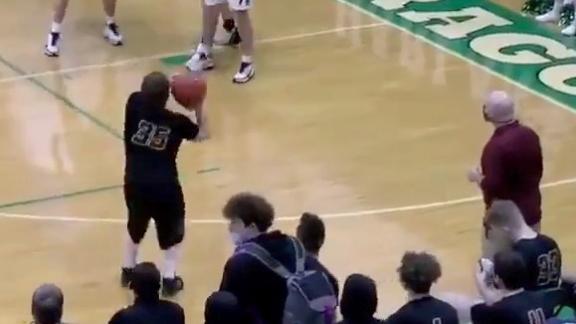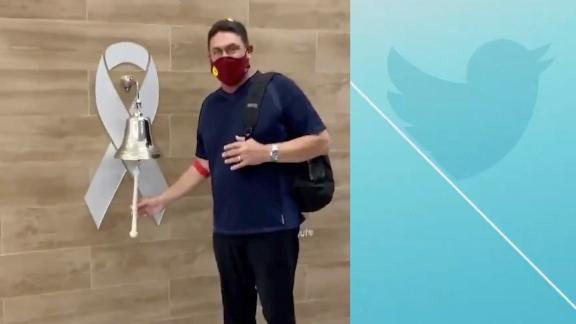We're past the halfway point, and although five teams have started to separate from the field, the race for the national championship is wide open.
The cream of the crop is in the ACC and SEC this year, as each conference could earn three national seeds. Florida, South Carolina and Vanderbilt have lived up to the preseason hype in the SEC East. Barring a major slump down the stretch, these teams can feel fairly safe among the top eight. There's more suspense in the ACC, where four teams have played their way into national seed contention. Sorting things out based on head-to-head matchups so far, Virginia and North Carolina have the inside track for the top spots, with Georgia Tech and Florida State hot on their heels.
If you've been following my early-season guesses at the field, you'll notice one major difference in this version -- the inclusion of Arizona State in the field. The Sun Devils are eligible for postseason play until their NCAA violations appeal is ruled upon, and the hearing is set for mid-May. Even after getting swept by Oregon State this past weekend, Arizona State has the best chance to earn a national seed from the Pac-10.
The fight for the final two national seeds comes down to conference champions versus a third spot for the ACC. The main contenders are Cal State Fullerton in the Big West and whoever survives the scrum atop the Big 12, but Conference USA has a chance if Southern Miss or Rice gets hot down the stretch. For now, the Titans and Texas A&M grab the last two national seeds.
With no major upstarts from colder climates this year, all 16 1-seeds are hosting in the regionals.
In most cases this year, the RPI matches up pretty well with conference standings and the "eye test" from watching teams play. Two notable exceptions are conference leaders UCLA and Connecticut. Both came into the season with high expectations after great campaigns in 2010, but both are languishing just inside the Top 100 in RPI after struggling in nonconference play. As the current Pac-10 leader, the Bruins will be a dangerous No. 2 seed with Gerrit Cole and Trevor Bauer. Connecticut earns the automatic bid in this projection, delaying the judgment on its at-large résumé, with Louisville earning a second bid for the Big East.
If Arizona State's appeal is denied, the Pac-10 will fall from six bids to five at this point. Washington State has a sparkling RPI, but the Cougars are below .500 overall and are mired in the bottom two in the conference standings. Oregon entered the season with high expectations after last year's regional appearance, but the Ducks have lost their first two conference series. If either of these teams gets hot down the stretch, though, the Pac-10 could pick up an extra ticket to the tournament.
Not surprisingly, the SEC is the big winner at this point of the season. With 10 teams in the top 40 in RPI (and the lowest of those leading the Western Division), it's hard to deny any of them a spot in the field. With six weeks left in the regular season, this number will probably play its way down to eight or nine by selection day, with the two teams missing the SEC tournament facing the longest odds.
Last year, C-USA was a Rice win in the conference tournament from being a one-bid league; this year, the conference shouldn't face a similar problem. Tulane earned the last bid in this projection because of its low standing in conference play -- at this point, any fewer than four bids would be a disappointment, and C-USA has two teams in position to contend for regional hosting opportunities.
The other big boys, the ACC and Big 12, get six teams apiece in the field and another team on the bubble. The ACC is stronger at the top, with four teams in the running for national seeds at the season's midpoint. The Big 12 is more consistent (four teams tied with 24-8 records) and appears a little deeper, as only Missouri is completely out of the running for a postseason bid.
Jeremy Mills is a researcher for ESPN and is a contributor to ESPN.com's college baseball coverage.
Follow ESPN.com's college sports coverage on Twitter: @ESPN_College and on Facebook.




